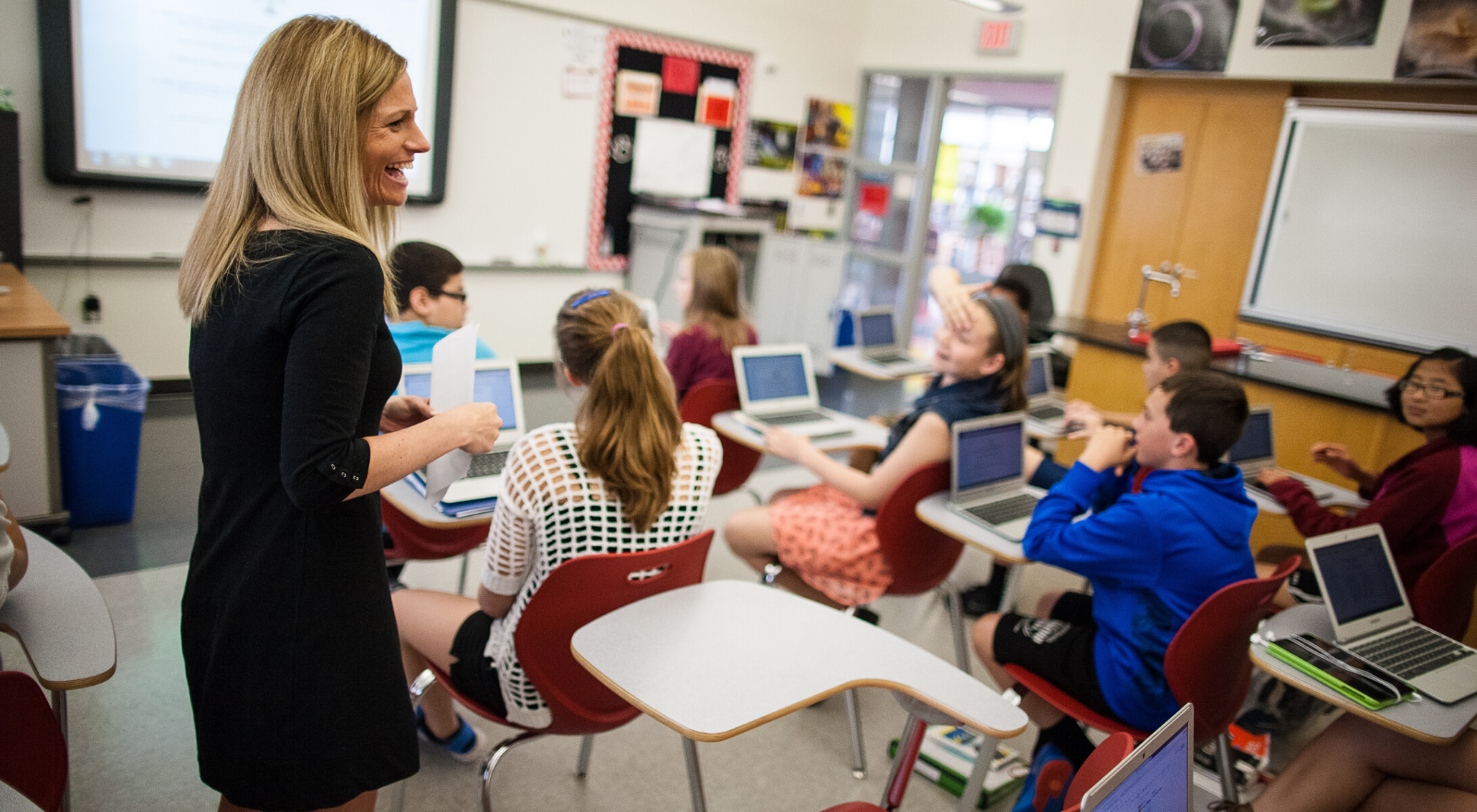Education plays a crucial role in personal and professional growth. In today’s rapidly evolving world, navigating the learning landscape can be challenging. This blog aims to provide valuable insights and strategies for achieving effective education that empowers learners to thrive.
I. Understanding the Learning Landscape
The current educational landscape is witnessing significant trends and shifts that impact how we learn and teach.
Technological Advancements and Learning:
- Technology has revolutionized education, offering innovative tools and platforms for learning. Virtual classrooms, online resources, and educational apps provide access to information and interactive learning experiences. Embracing technology can enhance engagement and foster a deeper understanding of concepts.
Blended Learning and Online Education:
- Blending traditional and online learning approaches is becoming increasingly popular. Blended learning combines face-to-face instruction with digital resources, enabling flexibility and personalized learning experiences. Online education opens doors for remote learning, reaching a broader audience and breaking down geographical barriers.
Lifelong Learning and Continuous Skill Development:
- The concept of lifelong learning has gained prominence. As the job market evolves, continuous skill development is crucial. Learning doesn’t end with formal education; it becomes a lifelong journey of acquiring new knowledge, adapting to change, and honing skills relevant to a dynamic world.
II. Insights for Effective Education
To achieve effective education, we need to consider valuable insights and implement proven strategies.
A. Setting Clear Learning Goals:
Clearly defining learning goals provides direction and purpose.
Define the Purpose and Desired Outcomes:
- Identify the purpose of education and what you want learners to achieve. Set specific, measurable, achievable, relevant, and time-bound (SMART) goals.
Breaking Down Goals into Achievable Milestones:
- Break down large goals into smaller, manageable milestones. This approach allows learners to track progress and experience a sense of accomplishment, motivating them to continue learning.
Tracking Progress and Making Necessary Adjustments:
- Regularly assess learners’ progress towards their goals. Adjust teaching strategies, content, or pacing if needed to ensure learners stay on track.
B. Emphasizing Active Learning:
Active learning engages learners in the learning process, enabling better retention and application of knowledge.
Engaging Learners Through Hands-on Activities and Projects:
- Encourage learners to actively participate in hands-on activities, experiments, and real-world projects. This approach fosters curiosity, critical thinking, and problem-solving skills.
Incorporating Real-World Examples and Case Studies:
- Connect classroom concepts to real-world scenarios. Integrate case studies, examples, and practical applications to help learners understand the relevance and importance of what they are learning.
Encouraging Collaboration and Discussion:
- Foster an environment that promotes collaboration and peer-to-peer learning. Encourage learners to engage in discussions, share perspectives, and collaborate on projects. This cultivates teamwork, communication, and the exchange of ideas.
C. Utilizing Technology for Enhanced Learning:
Leveraging technology can create engaging and immersive learning experiences.
Integrating Educational Apps and Online Resources:
- Explore educational apps, interactive simulations, and online resources that enhance learning outcomes. These tools can provide additional practice, simulations, and personalized learning experiences.
Exploring Interactive Multimedia for Engaging Content:
- Incorporate multimedia elements such as videos, infographics, and interactive presentations to make the learning content more engaging and accessible. Visual and interactive elements aid understanding and retention.
Leveraging Virtual and Augmented Reality for Immersive Experiences:
- Virtual and augmented reality technologies offer immersive learning experiences. By simulating real-world scenarios, learners can develop practical skills and gain a deeper understanding of complex concepts.
D. Developing Critical Thinking and Problem-Solving Skills:
Nurturing critical thinking skills equips learners to analyze information, solve problems, and make informed decisions.
Encouraging Analysis, Evaluation, and Creativity:
- Promote critical thinking by asking thought-provoking questions, encouraging analysis of information, and evaluating multiple perspectives. Encourage learners to think creatively and explore innovative solutions.
Promoting Independent Thinking and Decision-Making:
- Empower learners to think independently and make decisions based on evidence and logical reasoning. Provide opportunities for learners to solve problems autonomously, fostering confidence and self-reliance.
Offering Opportunities for Practical Application of Knowledge:
- Connect theoretical knowledge to real-life situations. Provide opportunities for learners to apply what they have learned in practical contexts, reinforcing their understanding and developing problem-solving skills.
III. Strategies for Effective Education
Implementing effective strategies can create an environment conducive to meaningful learning experiences.
A. Personalized Learning:
Recognize that each learner is unique and tailor instruction to their individual needs and preferences.
Tailoring Instruction to Individual Needs and Preferences:
- Differentiate instruction to accommodate diverse learning styles, abilities, and interests. Use assessment data to identify areas where learners need additional support or enrichment.
Implementing Adaptive Learning Platforms:
- Leverage adaptive learning platforms that use artificial intelligence to personalize learning experiences. These platforms dynamically adjust content and learning pathways based on learners’ progress and performance.
Providing Differentiated Assessments and Feedback:
- Offer varied assessment methods to gauge learners’ understanding and progress. Provide timely and constructive feedback that helps learners identify areas for improvement and celebrate their achievements.
B. Cultivating a Positive Learning Environment:
A positive and inclusive classroom culture fosters engagement, collaboration, and well-being.
Fostering a Supportive and Inclusive Classroom Culture:
- Create a safe and welcoming environment where learners feel valued, respected, and included. Promote empathy, understanding, and appreciation for diversity.
Promoting Effective Communication and Active Listening:
- Encourage open and respectful communication among learners and between teachers and learners. Foster active listening skills, ensuring everyone’s voices are heard and understood.
Celebrating Diversity and Promoting Empathy:
- Embrace and celebrate diverse perspectives, cultures, and backgrounds. Encourage learners to develop empathy and understanding towards others, fostering a culture of inclusivity and acceptance.
C. Building Strong Teacher-Student Relationships:
Strong relationships between teachers and learners create a supportive learning environment.
Establishing Trust and Mutual Respect:
- Build trust by demonstrating integrity, transparency, and consistency. Show genuine care and respect for learners, fostering positive teacher-student relationships.
Encouraging Open Dialogue and Feedback:
- Create opportunities for open dialogue, allowing learners to voice their thoughts, concerns, and ideas. Seek feedback from learners to continuously improve teaching practices.
Providing Mentorship and Guidance:
- Serve as a mentor and guide, supporting learners in their educational journey. Offer guidance, encouragement, and resources that facilitate their growth and development.
D. Encouraging Lifelong Learning:
Instilling a passion for lifelong learning empowers learners to adapt to changing needs and pursue continuous growth.
Instilling a Growth Mindset in Learners:
- Foster a growth mindset by emphasizing that intelligence and abilities can be developed through effort, perseverance, and learning from failures. Encourage learners to embrace challenges and see them as opportunities for growth.
Promoting Curiosity and Self-Directed Learning:
- Nurture learners’ natural curiosity by encouraging questions, exploration, and self-directed learning. Provide resources and opportunities for independent research and exploration of topics that interest them.
Creating Opportunities for Continuous Skill Development:
- Emphasize the importance of lifelong skill development. Integrate opportunities for learners to acquire new skills, whether through workshops, online courses, or mentorship programs. Encourage them to stay updated with emerging trends and technologies.
Takeaway
Effectively navigating the learning landscape requires a thoughtful approach and the implementation of proven strategies. By setting clear goals, emphasizing active learning, leveraging technology, and fostering critical thinking skills, educators can create impactful learning experiences. Additionally, personalized learning, a positive classroom culture, strong teacher-student relationships, and a focus on lifelong learning contribute to students’ long-term success. Let us embrace the ever-changing educational landscape and empower learners to thrive in the digital age through effective education.











